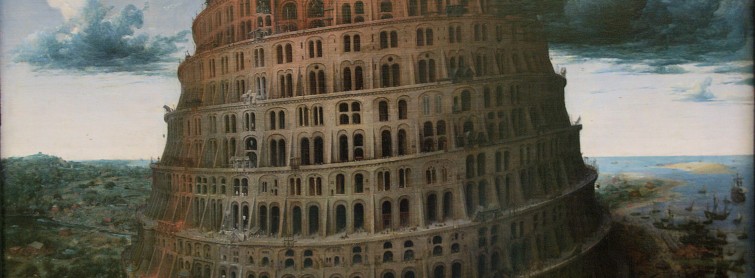The Tower of Babel is a story told in Genesis, which depicts the scattering of languages among humanity, by God. The story is meant to explain the origin of language variation present in the world today, and serves as yet another example of competition between humans and God (other stories include the Garden of Eden in Genesis 3).
For centuries, the story of the Tower of Babel has been paid much attention, particularly the location of the transcendent Tower which caused God to scatter humanity and confound the human language. But where is the Tower now?
Many have searched for the mystical tower mentioned in Genesis 11, and some have even found ancient sites which offer compelling evidence for the tower’s location. The accounts found in Genesis do not make any mention of the tower’s destruction, which encourages Biblical archaeologists to believe that the tower is either still in existence, or at least continued to survive for a while after the event took place. While the Biblical accounts do not give us specific information about the location of the tower, they do leave a few solid clues on which to start the investigation.
Shinar
The story of the Tower of Babel opens with an explicit clue as to where the tower once stood. Genesis 11 states;
“And as they migrated from the east, they came upon a plain in the land of Shinar and settled there.” (v2)
Since this is the only clue that we have to the location of the tower, we must begin our search here…in Shinar. It was here, in Shinar, that the people began to rebel against God, and set out to construct a tower which would reach the heavens.
The location of Shinar is ambiguous. Wikipedia calls it the geographical location “of uncertain boundaries in Mesopotamia.” However, the name Shinar occurs eight times elsewhere in the Old Testament, and always appears to refer to the wider area of Babylonia. Some have even suggested that the location of Shinar in Babylonia is reinforced by the name of the tower ‘Babel’, which is a play on words for ‘Babylon’. Though the Biblical description of Shinar does not contain much detail, it seems likely that Shinar was within the territorial area of greater Babylonia.
Ziggurats
It is commonly believed, among Biblical scholars and archaeologists, that the Tower of Babel was a ziggurat.
A ziggurat is a well-known structure of the ancient world which was often built and dedicated to a God. The most notable of these is ‘Etemenanki’, which was constructed and consecrated by Nabopolssar, King of Babylonia, in the name of the Mesopotamian God ‘Marduk’. Etemenanki was over 300 feet high and was demolished under the reign of Alexander the Great. Historians agree that the descriptions given of the Tower of Babel closely match those to an early ziggurat. A few ziggurats are still in existence today, with the largest surviving one located in Western Iran, in what was once the ancient land of Elam.
Ziggurats usually had a square base with receding level. Because the Tower of Babel was designed to reach up to heaven, we must assume that the base would have been extremely large in order to sustain such a height. It is also interesting to note that the builders of Babel were not only looking to build the tower, but were constructing an entire city – a fact which is mentioned three times in the first verse of the story. Ziggurats in other parts of the world were never built in isolation – they were also accompanied by temples, shrines and other prominent religious and civic buildings. This means that when we are trying to locate the tower, we need to be looking for an entire city, or the remains of one, rather than a lone tower, which is often how the Tower of Babel has traditionally been depicted.
Some sources even indicate that the Tower of Babel was adjacent to the mystical Hanging Gardens of Babylon, one of the seven wonders of the ancient world.
Building Materials
Another clue to the location of the tower is the building materials, which the text refers to in detail.
The first half of Genesis 11:3 describes the Tower as being made out of burnt bricks, while the second half outlines that they had “brick for stone, and bitumen for mortar.” Modern historians have confirmed that this description of the building materials is in keeping with what we know about ancient architecture in this area, particularly since bitumen was the usual mortar used in conjunction with kiln-fired bricks in the Mesopotamian area.
The choice to use kiln-baked bricks, and to explicitly describe the expensive building materials used is interesting. Firstly, the choice to use kiln-baked bricks indicates that the Tower was intended to last, since this material was known for its durability. Secondly, the explicit description of the expensive building materials lends further support to the theory that the tower was a ziggurat. The use of baked bricks was not underway until the mid-4th century B.C. and even then, was only employed for luxurious buildings such as temples and ziggurats.
Where Is It?
So where do we find this ancient kiln-baked brick ziggurat in Shinar? Because the Tower would probably now be nothing more than rubble, it is difficult to concisely pinpoint its location. However, given the durable material that Genesis 11 describes as having been used for the construction of the tower, and since the accounts in Genesis do not describe the tower coming under any type of destruction, there is a possibility that remnants of the Tower of Babel may well have survived until now.
Modern archaeologists claim that the remains of the Tower of Babel may still exist, in an area which was once occupied by ancient Babylon. The foundations of the tower still stand and the remaining embankments have been estimated to date back to the rule of King Nebuchadnezzar II who lived from 605-562 BC. Jewish historian Josephus claimed that Nebuchadnezzar was also responsible for the construction of the Hanging Gardens of Babylon.
Wherever the Tower lies, it is fair to assume that since God was so displeased with humanity’s efforts to construct it, he probably does not want humanity to find it, lest we once again pursue our efforts to ‘make a name for ourselves’.
Sign our petition to establish Creation Day as an official holiday!
- 4 Reasons to Believe in Creation - October 7, 2015
- How Many Of Each Animal Was On The Ark? - October 3, 2015
- Living A Christian Life In A Culture of Consumption - October 3, 2015

